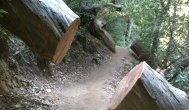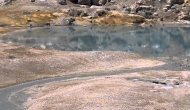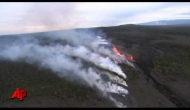Part 1 of a 7-part series.
Part One: Before the Trailhead
I didn’t know exactly why I wanted to climb a mountain when I first announced my intentions to my husband. I’d always loved the outdoors, but I wasn’t an avid hiker, and I had never backpacked through the wilderness. The previous year I had done my first triathlon without knowing how to swim, so there was already an established pattern of overcoming self-imposed obstacles. So I suppose it was an endurance cliche, to see how far I could push my body and my mind. But every athletic endeavor can be seen as a metaphor for life so let’s not bore ourselves with the obvious…but a mountain… it could have been something else like one of those mega bike rides from San Francisco to L.A. Or a marathon. So maybe it was the romance of the backpack and the dirt and the fringe benefit of bragging rights. “Yeah, I bagged that mountain, filtered my own water, got altitude sickness, crapped with the bears…” You know, romance.
Sean looked at me incredulously at first. But considering that in the last 12 years he has witnessed me as a script supervisor, theatre director, founder of a non-profit organization, television producer, director, writer, yoga instructor, personal trainer, triathlete, runner, mother, and general liver-of-life, he knew not to underestimate my spontaneity.
The object of my desire was California’s Mt. Whitney — the tallest mountain in the 48, standing at 14,500 feet, according to the latest measurements from the NOAA’s National Geodetic Survey. Most websites will tell you 14,505 feet, but that’s old data. The actual plaque at the top reads 14,494 but that’s old data, too. And really, once you’re over 14,000 feet who really cares. It’s the highest peak in the U.S.! It stands majestic…tall, dark, and handsome. It’s the George Clooney of mountains. Hordes of people vie to get a piece of its action each year, but the National Park Service acts like its bodyguards, mandating permits in order to keep the number of people climbing on it manageable. And permits are scarce because more people want to climb Whitney than its poor trails can handle. During the summer months, permits are only issued via a lottery system. July and August are the Powerballs–- not just because everyone is on summer vacation but because the weather is generally mild and somewhat predictable, and you don’t have to worry about snow and ice, cold weather gear, freezing at night, crampons, death…
But not to say no one dies during the summer months trying to climb Whitney. They do, and for all kinds of reasons including lightning storms, altitude sickness, dehydration, carelessness, and general lack of preparedness. Mt. Whitney has a 70% failure rate. Take into consideration that Mt. Everest has a 66% failure rate and you can see that climbing this mountain is no joke.
Mind you, I did not know all this when I first made my declaration. It was just a highly attractive mountain, lots of people were doing it, and its close proximity was a turn on. With two small kids and a limited amount of time, it seemed like a doable quickie. I even made a public statement on Facebook: “I’m climbing Mt. Whitney!”
When I started reading books and perusing websites about climbing Whitney, I realized it was going to take a heck of a lot of romancing to really mount that sucker and get that feather in my cap. I’m not just talking about the time from trailhead to summit but the time to train to make sure I would summit. I wanted to be one of the 30% with a happy ending. And of course, I also didn’t want to lose face on Facebook. What would all 200 of my closest friends think of me?
Sean and I decided we would take the popular “mule” route- the Mt. Whitney Trail, 22 miles round trip in two days, with an elevation gain of over 6,100 feet. Preparations began a little over a year before our target date (we were aiming for June or July) and several months before we could officially apply for our permit.
We used the time to amass the necessary gear: full backpacks, sleeping bags, sleeping pads, down coats, vests, boots, socks, sock liners, poles, water filtration systems, water purifying tablets, water bladders, hats, gloves, balaclavas, base layers, mid layers, shells, rain pants, rain jackets, hiking pants, wicking shirts, trail stove, propane canister, pot, bowls, spoons, compass, stuff sacks, maps, emergency blankets, first aid supplies, head lamps, pocket knife, waterproof matches, bug repellant, bear canisters, whistles, poop trowel, and hand sanitizer.
As I began worrying over the logistics of the midnight pee at 10,000 feet, I actually considered adding a female urinary device to the list – basically a soft, pliable car-oil funnel that would enable me to go standing up or at least with minimal squatting. Not only would it allow for a convenient in-tent pee, I could pee off the side of a cliff, or experience the fleeting joy of peeing my name in the dirt. But when I read the instructions on line, “Stand facing the toilet or with your back to the wind. Pull the extension tube outward from the spout until it locks. With your feet apart, move clothing aside enough to place the opening of the trough snugly against your body and proceed”, I thought it sounded too complicated, and perhaps uncomfortable, to deal with- high or low altitude. I’d also have to clean it, and it would take up valuable space and add more weight to my backpack. So much for marking my territory with a golden “K-E-R-R-Y”.
Having a little over a year was also welcome in that it gave us plenty of time to train. Our plan was to embark on “The Southern California Six-Pack” which refers to neither beer nor abs, but to six peaks each progressively more challenging in elevation gain and altitude. They are: Mt. Wilson,Cucamonga Peak, Mt. Baldy, San Bernardino Peak, Mt. San Jacinto, and Mt. San Gorgonio.
I had already been running, weight lifting, and practicing yoga on a regular basis, so I was in good shape, able to run six miles in less than an hour. Sean didn’t have the same stamina and needed to catch up. Utilizing my personal training background, I created a mad stair master routine for him along with an insane amount of mountain climbers (the calisthenic exercise, not a group of people). A few weeks later, we were ready to start hiking the hills around our house with significant poundage on our backs. It was here that I quickly learned it was nothing, nothing like working out at the Y.
First of all, when you run steadily on a treadmill or plod repetitiously on a stair climber, it takes very little time for your brain and muscles to predict the movement and therefore adapt. It becomes almost as effortless as breathing. Your mind says “oh, this again” to which your muscles reply with an instinctive nod. But on a trail, every loose piece of gravel becomes a new challenge to every part of your body – especially with a 20 pound plus (or in the case of my husband– a 40 pound) pack on your back. Not to mention that you’re doing it non-stop for hours… Talk about endurance. (Now before you think 20 pounds is nothing, consider that I weigh only 98 pounds. That’s about 20 percent of my body weight; Sean weighs 145, so his pack was about 27 percent of his body weight. To borrow from Einstein, “It’s all relative”…)
Then there are the elements that can’t be replicated in a gym: Heat, cold, wind, humidity, insects, wildlife…Conditioning ourselves to these factors was just as essential as training our muscles for the physical work. We had to learn how to deal with each unpredictable element, and often this became more of a mental challenge than a physical one.
As we worked out the kinks on gear, on snacks, on hydration, on our minds, and on our muscles, it seemed that my husband was faring better than me. When we took a training hike with full packs on the six-mile Beaudry Loop Trail in Glendale, he was all sunshine and rainbows while the fibers of my leg muscles felt like they were being ripped to shreds as some part of a medieval torture. Sean didn’t just tap dance around me. Oh no, there were pirouettes, sashays, grapevines, a Martha Graham move, and the totally offensive jazz hands. Okay, he didn’t really bust-a-move on the Beaudry trail, but he might as well have.
I really couldn’t understand it.
In my quest to find out why, I learned that according to the National Strength and Conditioning Association, women generally produce about two-thirds the amount of total strength and applied force that men produce. Women are also physically built so that they carry about two-thirds as much muscle mass as men. No surprise, but this helps prove that there is, in fact, a difference in strength, that men are typically stronger, and that most of the difference is based on body size and muscle cross-sectional area alone.
That doesn’t mean there aren’t amazing female hikers- Heather Anderson hiked all 2,655 miles of the Pacific Crest Trail in 61 days and 17 hours, only two days behind the world’s record. Set by a man. Of course. However, I find comfort in a Livestrong article that says, “In the absence of external-weighted load, women can be considered to be the supreme sex in sports reliant on rhythmic use of muscular coordination.” So theoretically I should be able to kick my husband’s ass in a round or two of Dance Revolution.
We had only gone a mere six miles, only traveled up 1,368 feet and I was whining about not just a burn- but a burning fire in the tender muscles of my ass. Next on our agenda was the first of the six pack: Mt. Wilson: a 14 mile loop with a 3,914 foot elevation gain – more than double what we had just finished. It was a little daunting, but I couldn’t change course. It wasn’t about silly pride on social media, heck I know no one really reads my posts. (I mean who wouldn’t “like” an image of two donkeys looking back at their overturned cart whose tagline reads: “We’re such badasses”?) It was more than that.
Mt. Wilson and all the peaks after it were like spinning planets pulling me into their orbit. I was drawn to the mystery of my own urgency to discover what each new terrain would hold. I couldn’t pin point exactly why I had to do it, I just knew I had to and that somewhere from trailhead to summit I would find out why. This was not going to be a quickie by any means. We were getting engaged, these mountains and me. I was in it for the long haul.
Up Next: Part 2- Mt. Wilson
**You should like Shea Magazine on Facebook HERE!**
Kerry Lambert
Kerry Lambert has written over two decades for television, film, and the internet. Some of her diverse credits include “Time Warp” and “Raging Nature” for the Discovery Channel, “The Secret Life Of…” for Food Network, and “Three Thieves” for The Cooking Channel. She has written about science, nature, filmmaking, fitness, travel, and health – not necessarily together- for a myriad of different websites as well as directed and produced for stage, tv, and film. She is a regular contributor to Shea Magazine and Discover Outdoor Life. She enjoys teaching yoga, running, hiking, and raising two beautiful daughters. For more info on Kerry visit her at http://kerryannlambert.weebly.com or click on the "web" link below.
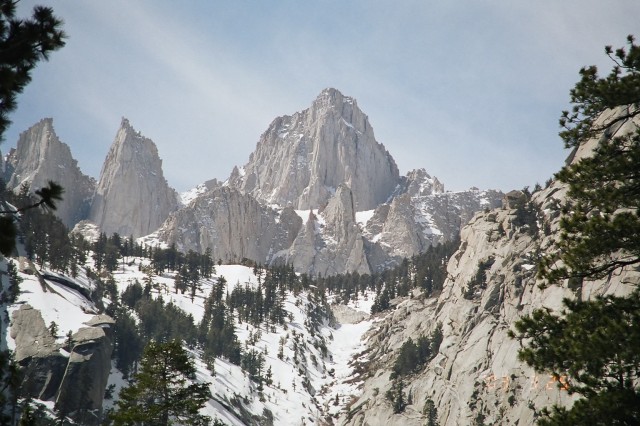
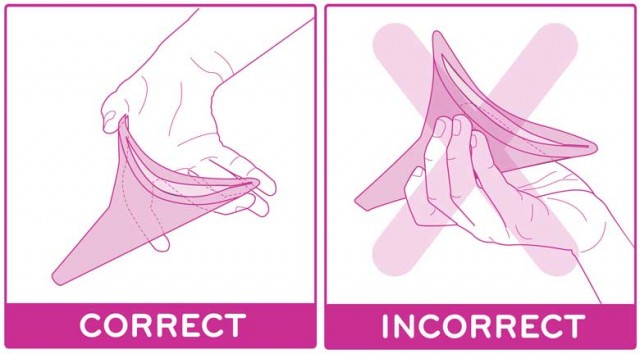







![Let's Go to Chinatown, Shall We? [PHOTOS]](https://sheamagazine.com/wp-content/plugins/special-recent-posts-pro/cache/MjAwMTAwbm9jaGluYXRvd24tMi1idy0=.jpg)

![Let's Go to the Empire State Building - Shall We? [PHOTOS]](https://sheamagazine.com/wp-content/plugins/special-recent-posts-pro/cache/MjAwMTAwbm9JTUdfMzkxNjE=.jpg)
![Sunset - Pelham Shore Park - Long Island Sound [PHOTOS]](https://sheamagazine.com/wp-content/plugins/special-recent-posts-pro/cache/MjAwMTAwbm9JTUdfMzM3MC1SRVNJWkU=.jpg)
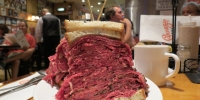
![Scenes from Washington Square Park - NYC [PHOTOS]](https://sheamagazine.com/wp-content/plugins/special-recent-posts-pro/cache/MjAwMTAwbm9JTUdfNDA1Mg==.jpg)
